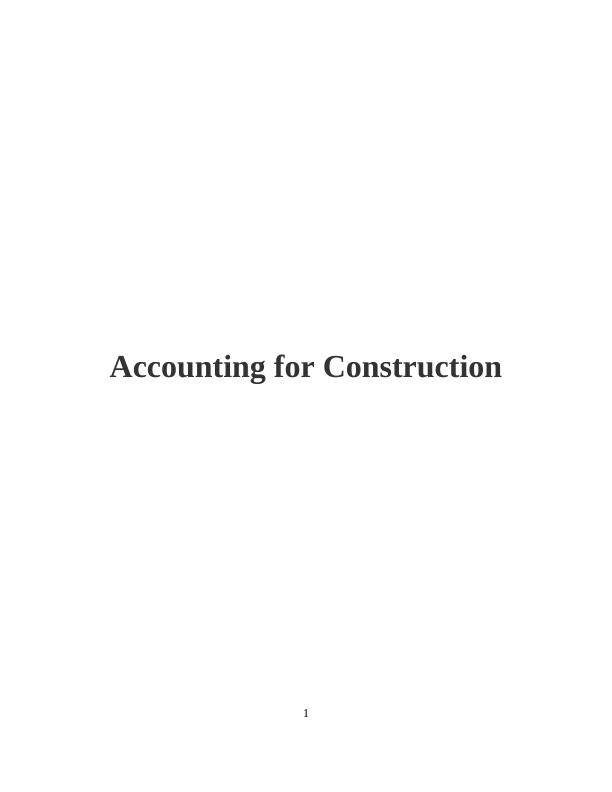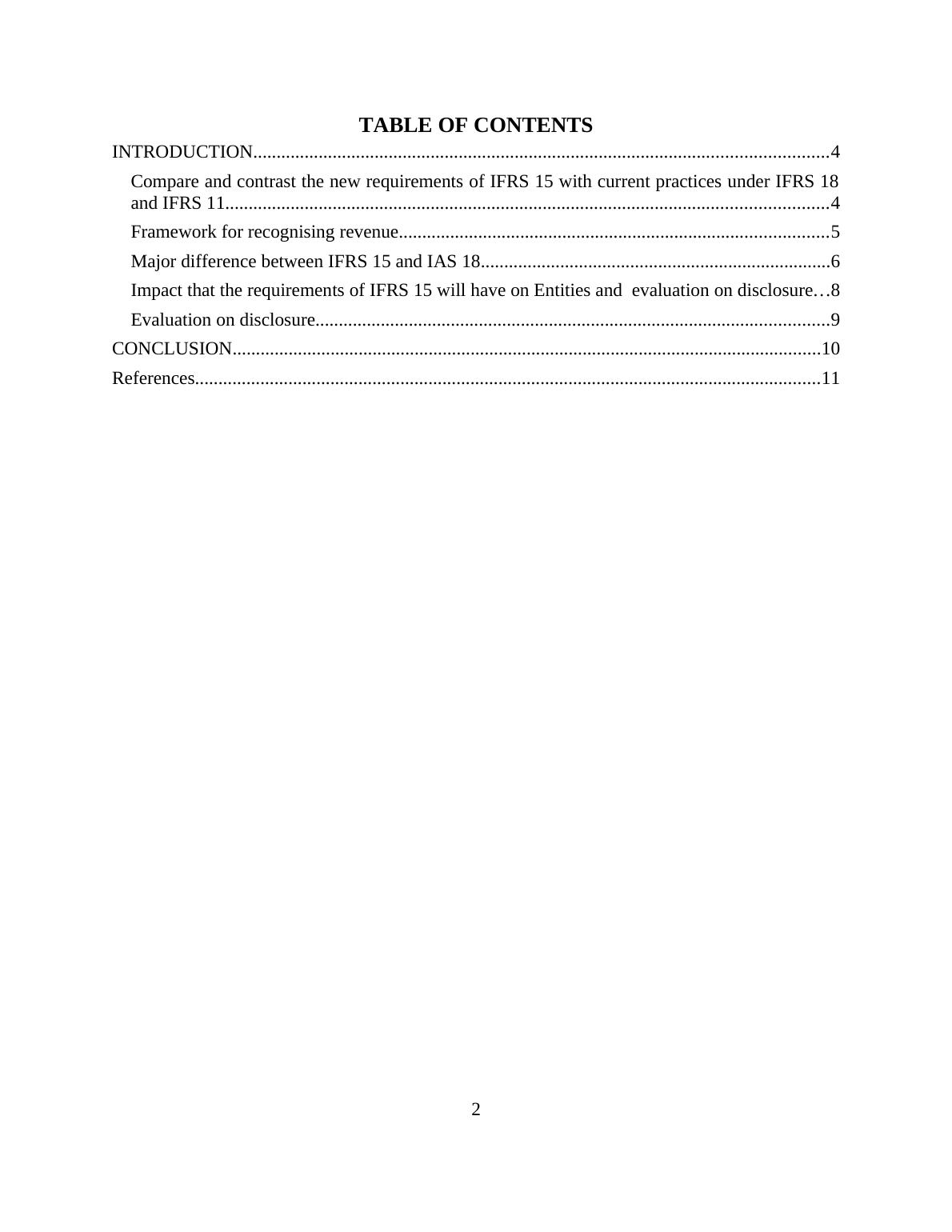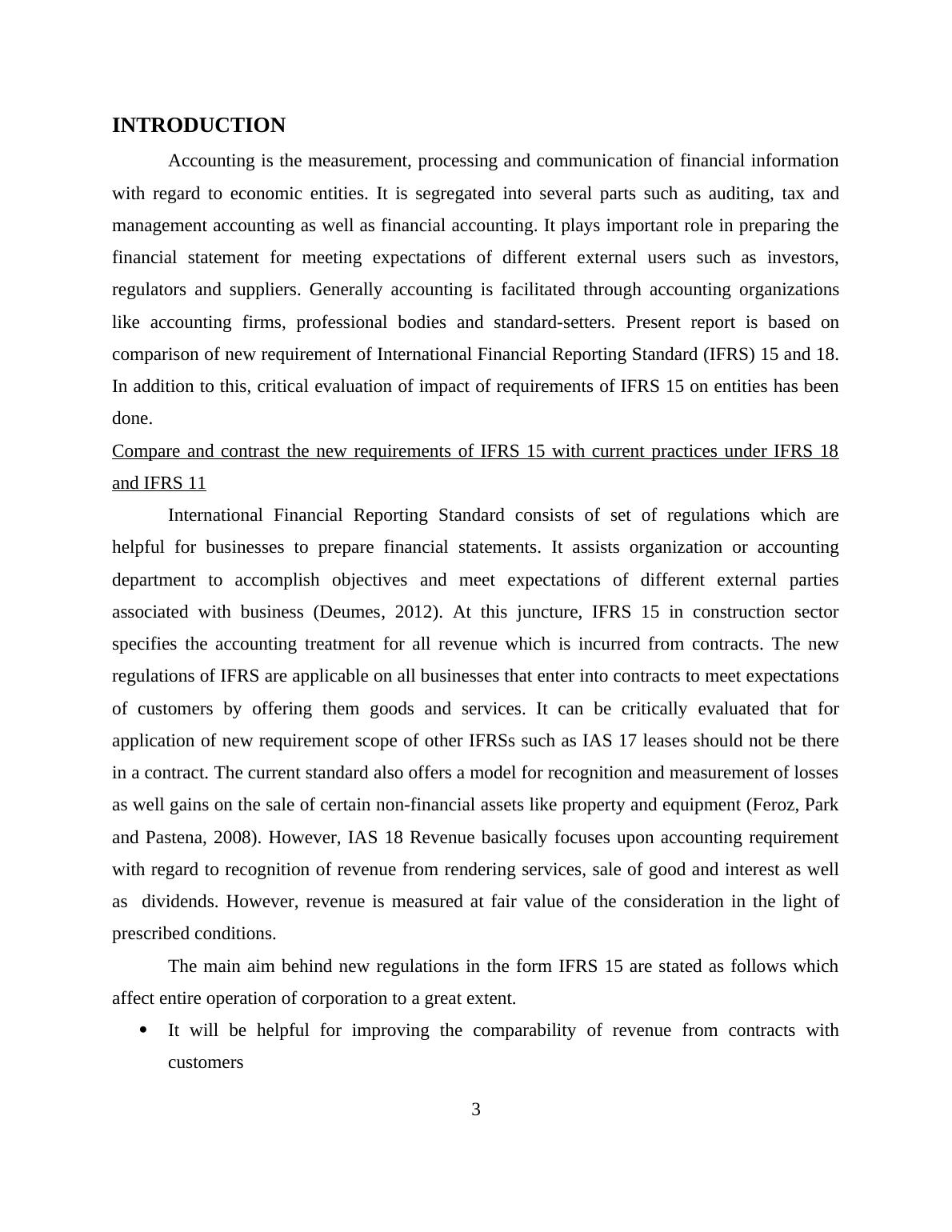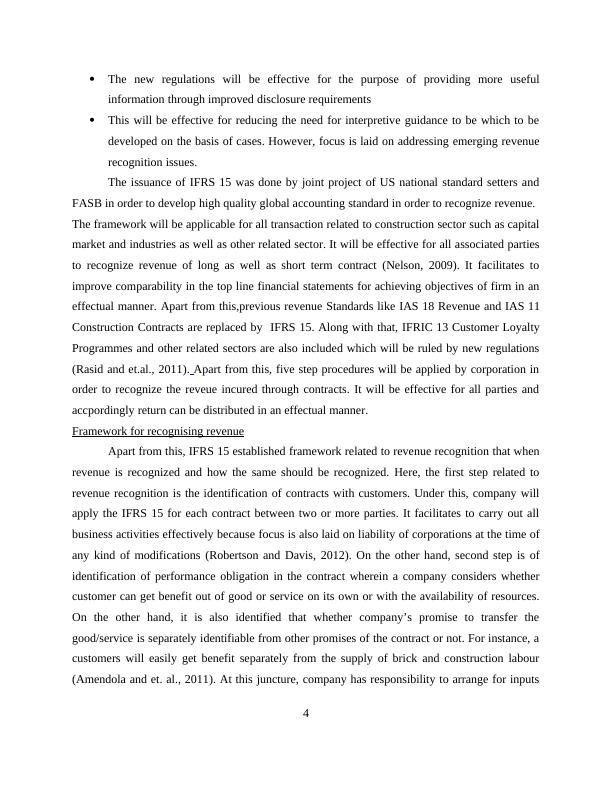Accounting for Construction
Added on 2020-01-28
11 Pages3277 Words498 Views
Accounting for Construction1

TABLE OF CONTENTSINTRODUCTION...........................................................................................................................4Compare and contrast the new requirements of IFRS 15 with current practices under IFRS 18and IFRS 11.................................................................................................................................4Framework for recognising revenue............................................................................................5Major difference between IFRS 15 and IAS 18...........................................................................6Impact that the requirements of IFRS 15 will have on Entities and evaluation on disclosure...8Evaluation on disclosure..............................................................................................................9CONCLUSION..............................................................................................................................10References......................................................................................................................................112

INTRODUCTIONAccounting is the measurement, processing and communication of financial informationwith regard to economic entities. It is segregated into several parts such as auditing, tax andmanagement accounting as well as financial accounting. It plays important role in preparing thefinancial statement for meeting expectations of different external users such as investors,regulators and suppliers. Generally accounting is facilitated through accounting organizationslike accounting firms, professional bodies and standard-setters. Present report is based oncomparison of new requirement of International Financial Reporting Standard (IFRS) 15 and 18.In addition to this, critical evaluation of impact of requirements of IFRS 15 on entities has beendone.Compare and contrast the new requirements of IFRS 15 with current practices under IFRS 18and IFRS 11International Financial Reporting Standard consists of set of regulations which arehelpful for businesses to prepare financial statements. It assists organization or accountingdepartment to accomplish objectives and meet expectations of different external partiesassociated with business (Deumes, 2012). At this juncture, IFRS 15 in construction sectorspecifies the accounting treatment for all revenue which is incurred from contracts. The newregulations of IFRS are applicable on all businesses that enter into contracts to meet expectationsof customers by offering them goods and services. It can be critically evaluated that forapplication of new requirement scope of other IFRSs such as IAS 17 leases should not be therein a contract. The current standard also offers a model for recognition and measurement of lossesas well gains on the sale of certain non-financial assets like property and equipment (Feroz, Parkand Pastena, 2008). However, IAS 18 Revenue basically focuses upon accounting requirementwith regard to recognition of revenue from rendering services, sale of good and interest as wellas dividends. However, revenue is measured at fair value of the consideration in the light ofprescribed conditions.The main aim behind new regulations in the form IFRS 15 are stated as follows whichaffect entire operation of corporation to a great extent.It will be helpful for improving the comparability of revenue from contracts withcustomers3

The new regulations will be effective for the purpose of providing more usefulinformation through improved disclosure requirementsThis will be effective for reducing the need for interpretive guidance to be which to bedeveloped on the basis of cases. However, focus is laid on addressing emerging revenuerecognition issues.The issuance of IFRS 15 was done by joint project of US national standard setters andFASB in order to develop high quality global accounting standard in order to recognize revenue.The framework will be applicable for all transaction related to construction sector such as capitalmarket and industries as well as other related sector. It will be effective for all associated partiesto recognize revenue of long as well as short term contract (Nelson, 2009). It facilitates toimprove comparability in the top line financial statements for achieving objectives of firm in aneffectual manner. Apart from this,previous revenue Standards like IAS 18 Revenue and IAS11Construction Contracts are replaced by IFRS 15. Along with that, IFRIC13 Customer LoyaltyProgrammes and other related sectors are also included which will be ruled by new regulations(Rasid and et.al., 2011).Apart from this, five step procedures will be applied by corporation inorder to recognize the reveue incured through contracts. It will be effective for all parties andaccpordingly return can be distributed in an effectual manner. Framework for recognising revenueApart from this, IFRS 15 established framework related to revenue recognition that whenrevenue is recognized and how the same should be recognized. Here, the first step related torevenue recognition is the identification of contracts with customers. Under this, company willapply the IFRS 15 for each contract between two or more parties. It facilitates to carry out allbusiness activities effectively because focus is also laid on liability of corporations at the time ofany kind of modifications (Robertson and Davis, 2012). On the other hand, second step is ofidentification of performance obligation in the contract wherein a company considers whethercustomer can get benefit out of good or service on its own or with the availability of resources.On the other hand, it is also identified that whether company’s promise to transfer thegood/service is separately identifiable from other promises of the contract or not. For instance, acustomers will easily get benefit separately from the supply of brick and construction labour(Amendola and et. al., 2011). At this juncture, company has responsibility to arrange for inputs4

End of preview
Want to access all the pages? Upload your documents or become a member.
Related Documents
Impact of IFRS 15 on BAE Systems plclg...
|10
|2431
|92
Financial instruments Reclassificationslg...
|13
|2817
|31
International Financial Reporting Standardslg...
|12
|2963
|252
International Financial Reporting Standard: Recent Developments and Impactlg...
|4
|699
|60
1. Current Development and accounting thought. 2. Answelg...
|12
|3461
|38
Analysis of Australian Accounting Standards Changes and Exposure Draft of IAS 16lg...
|11
|3573
|353
